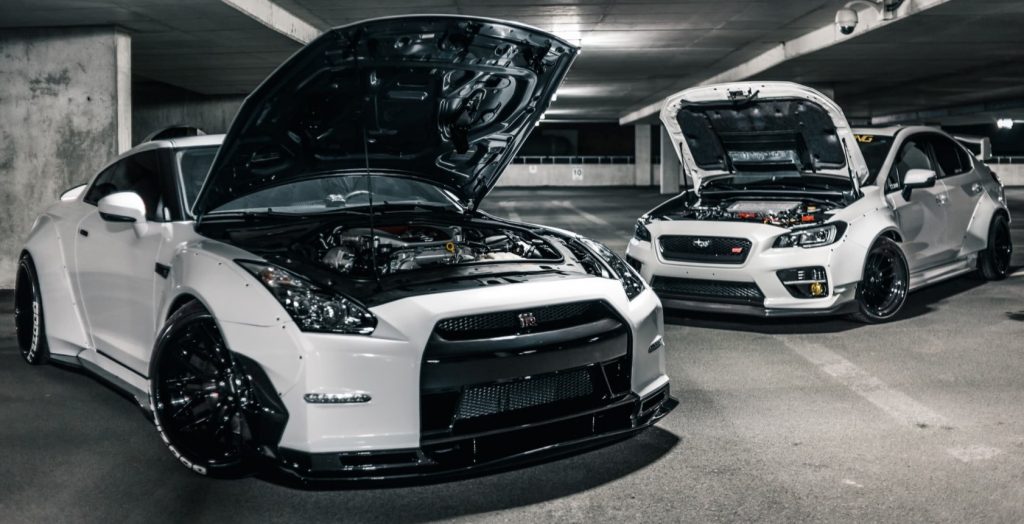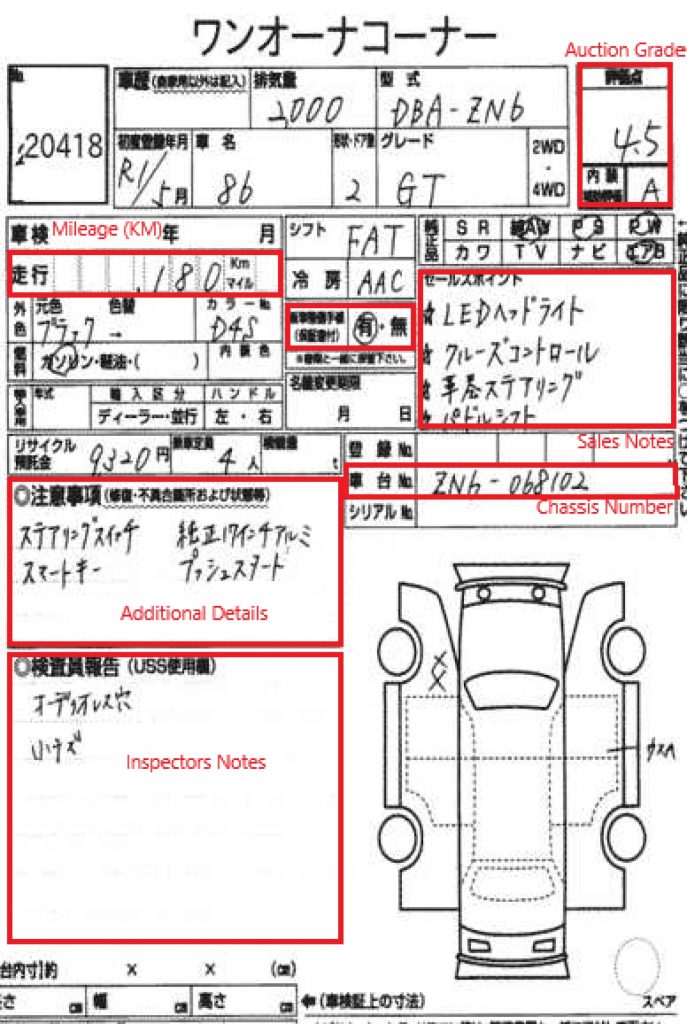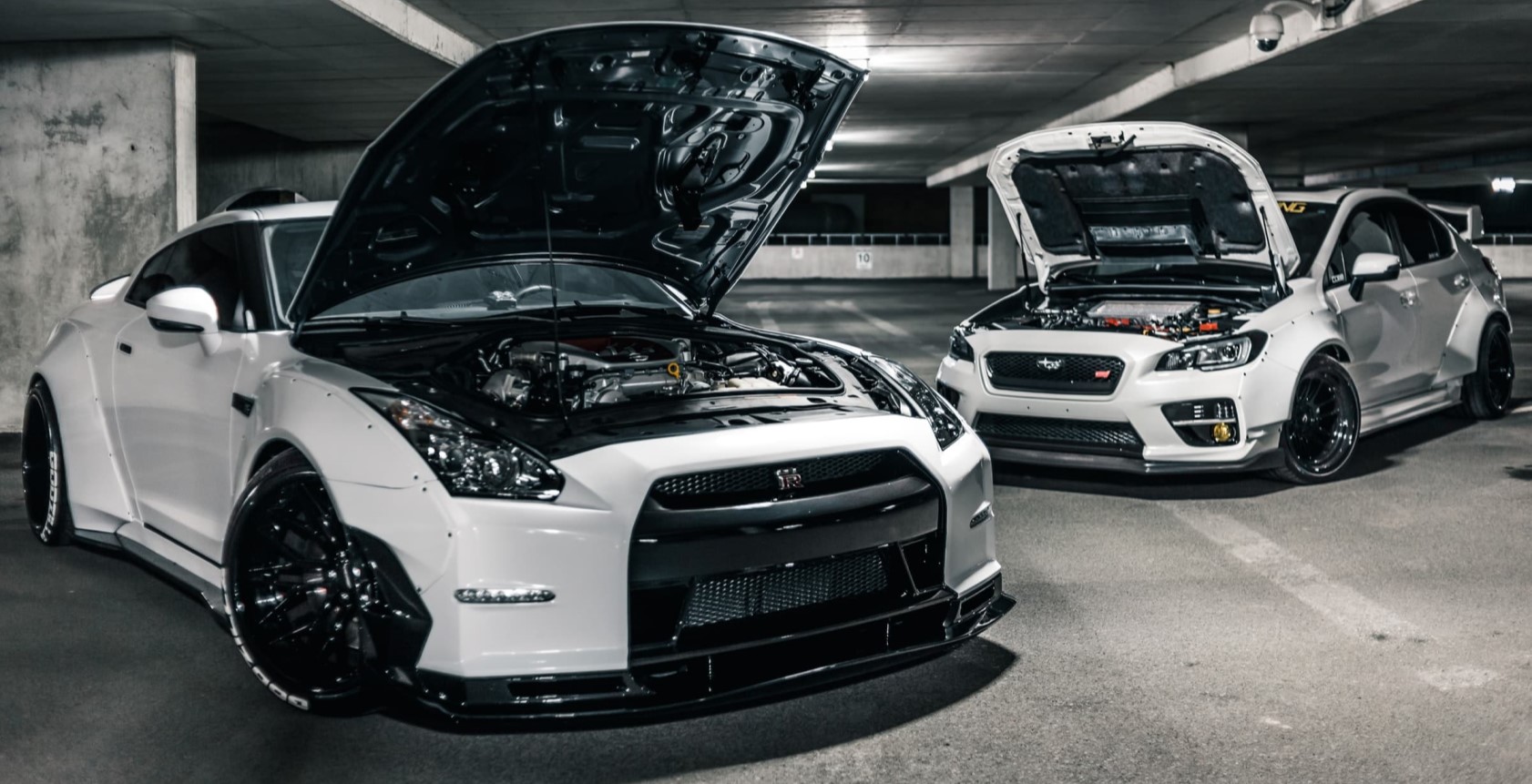HAVE YOU EVER WANTED TO IMPORT A CAR FROM JAPAN BUT DIDN’T KNOW HOW OR EVEN WHERE TO START?
For the uninitiated it can be a minefield; not only do you have to decide upon the perfect condition vehicle for your budget but you also have to navigate a language barrier, export procedures, foreign customs, currency conversion, export documentation, taxes and fees. All this needs to be taken into consideration before the car has even landed on UK soil! But preparing yourself with a little knowledge can make a daunting task easily achievable. There is a wealth of beautiful and well-maintained cars in Japan, and now is the best time to be tapping into the second-hand market abroad to find yourself that gem that you just can’t find at home.

LET’S START AT THE BEGINNING. WHY EVEN IMPORT FROM JAPAN IN THE FIRST PLACE?
Japan is host to some of the most famous car models in the world. Boasting manufacturers such as Nissan, Toyota and Mazda, you can pick up cars like the iconic Skyline R34 GTR, a nostalgic Toyota Supra or Mazda RX-7. It’s home to some of the best in terms of design, reliability and sheer on the road power. Plus, Japanese cars are right-hand drive. Bonus!
Japan has a HUGE market for second-hand cars. Why? Well not only are Japanese cars famous for their reliability and design, additionally, Japanese testing and tight quality control means that JDM (Japanese Domestic Market) vehicles roll off the factory line at better quality than those manufactured outside of Japan.
In addition to this Japan has very rigorous vehicle testing standards meaning as a car gets older it is usually more attractive for Japanese citizens to simply buy a new car in-warranty every few years rather than pay for the demanding and expensive vehicle inspections. This is even more so for vehicles over 10 years old that must undergo even stricter testing.
Japan also has a very well maintained and funded public transport services, so their cars are driven a lot less meaning that wear and tear are minimal. In turn, this frees up a lot of motors that have been cared for with low mileage and haven’t been driven into the ground.
With the above in mind, Japanese auction houses are open to a global market, so they strive to uphold certain standards. To achieve this every single lot is inspected by professionals who detail the auction sheets with any bumps, scrapes, damage, wear and tear and aftermarket modifications. To summarise these details, they give each car a grading depending on how clean it is ranging from R (accident history) to 6 (immaculate condition).

OK, I’M SOLD. WHERE DO I START?
Now begins the process of finding your perfect car. First, think about your budget, what is the maximum you want to spend to have your car landed in the UK? You’ll notice that cars at auction in Japan sell for a significantly cheaper price than cars sold on the second-hand market in the UK. However, you’ll need to factor in your shipping costs, marine insurance, UK duty and VAT and then cost to have your car registered in the UK. When working out your budget you’ll be figuring out the UK taxes on the CIF price (Cost, Insurance and Freight). Essentially, the total price it took to have your car leave Japan on a ship headed to the UK.
Once you have your budget its time to start searching the auctions. Use our auction search tool, it’s a great way to see the condition of cars that are coming up for auction and the frequency you’ll see them get listed. It will help paint a picture of the quality of a car you can expect for your budget.

UNDERSTANDING THE AUCTION SHEETS.
To help you make the most informed decision you’ll need to understand how the auction sheets depict the condition of the car. The image here shows a typical USS auction network sheet. Different auction houses can use slightly different sheets, but they mostly can be read in the same way.
- 6 – Less than 12 months old from the registration date. The car is in immaculate condition.
- 5 – Near perfect condition with very minor imperfections
- 4.5 – A great grade with slightly higher mileage than a grade 5. There might be slight imperfections in the bodywork
- 4 –The car is in above average condition and will most likely have service records. There may be some usual dings and scratches for a car of its age and may need minor repair to rectify.
- 3.5 – This is the grade people usually look for when looking for a bargain. Will need standard maintenance and possibly some minor repair work.
- RA – This car has had some minor accident damage and has been well repaired. Don’t let this grade throw you off, it can still be a very high-quality vehicle!
- 3 – At this grade, we are starting to see very obvious scratches, dents and blemishes. It most likely needs some kind of body or paint repair, the interior will need TLC with rips or burns in the seats and cracks and missing panels on the inside.
- R – This car has accident history and may or may not have been repaired. However, it is also associated with cars that have been modified to some extent, usually drift or race cars.
- 2 – The car has corrosion or rust, has holes in body panels and is in very poor condition. Unless you are looking for a project car, steer clear from this point on!
- *** / 0 / Blank Grade – Now we’re into the realm of bad accidents, non-runners or haven’t been inspected at all, usually due to very obvious and large damage.
- A1 – Small Scratch
- A2 – Scratch
- A3 – Big Scratch
- B1 – Small dent with scratch (size like a thumb)
- B2 – Dent with scratch (size like flat of the hand)
- B3 – Big Dent with scratch (size like an elbow)
- C1 – Corrosion
- C2 – Heavy Corrosion
- E1 – Few Dimples
- E2 – Several Dimples
- E3 – Many Dimples
- H – Paint faded
- P – Paint marked
- S1 – Rust
- S2 – Heavy Rust
- U1 – Small Dent
- U2 – Dent
- U3 – Big Dent
- W1 – Paint Repair Wave (hardly detectable)
- W2 – Paint Repair Waves
- W3 – Paint Repair Waves (needs to be repainted)
- X – Panel needs to be replaced
- XX – Panel has been replaced
- Y1 – Small Hole or Crack
- Y2 – Hole or Crack
- Y3 – Big Hole or Crack
- R – Repaired Crack on Windshield
- X – Crack on Windshield (needs to be replaced)
- RX – Repaired Crack on Windshield (needs to be replaced)
- G – Stone chip in the glass
I’VE WON! SO NOW WHAT, SHIPPING AND IMPORTING, HOW DO I DO THAT?
The easiest way to get your car to the UK will be via roll on roll off shipping, often referred to as RoRo. Your car will be driven onto a ship leaving Japan using its integral ramps. These ships are specifically designed to transport high volumes of vehicles without the need for loading them into shipping containers.
The decks in these ships are fully enclosed to ensure your car remains protected from the elements and have secure points running through the floors to anchor the cars down to. Straps are used around the wheels and then tied down to the eyelets to ensure the car doesn’t move during shipping.
While the shipping companies do a great job of loading and looking after your car while in transport, accidents can and do happen. When shipping your car ensure that you have taken marine insurance to protect your investment from total loss. The last thing you want to happen is to wake up one day to an email that your car was lost to a sunken ship!
Once your car is on the ship it’s time to sit back and wait. Shipping usually takes around 6 to 8 weeks depending on which port in the UK your car is coming into, the most common being Bristol, Southampton and Newcastle. While your car is in transport you are going to have a LOT of reading to do.
Getting your car through UK customs is no easy task. You’ll need to ensure that your duty, VAT and port fees are paid, notify the DVLA of the arrival of your vehicle and then finally you’ll need to arrange clearance and pick up your car from the port.
WHERE DO I GO FROM HERE?
Once your car is sat on your driveway, you’ll need to arrange speedo dial conversion, fog light conversion and then get your new car MOT’d. All this needs to be done before you can approach the DVLA to register your new car and get car tax and UK plates. At this point, you will most likely want to give your car a service and have the undercarriage sealed.
Seems like a lot of work, right? Well, it is. But the upshot is, for a nominal fee we are there to help. Taabo Imports can help you determine your requirements and budget and will search thousands of auction lots daily to find you vehicles that meet your desired specifications. We will send you listings to consider along with a video translation of the auction sheet so you can note any imperfections. You can expect us to stay in touch daily to update you with any new lots and if you are interested in any we can help arrange inspections before the auction.
As you can imagine after reading this article there is a lot of paperwork required to import a vehicle; the car needs to be cleared at customs, all of the Japanese paperwork needs to be signed off, auction fees need to be paid, shipping needs to be arranged and that’s only part of the process!
One of the benefits of using Taabo Imports is that we take care of everything for you. Once your car has been won at auction we begin the process of getting it moved to the port ready to be shipped to the UK. We arrange all the paperwork Japanese side, including fees, documentation and getting the car onto the boat via RORO (roll on roll off). Once it’s on its way we provide you with a tracking link so you can see exactly where your car is as its crossing the ocean.
When I said we handle it all, I mean it. Once the car has touched down on UK soil we get it cleared at customs, arrange payment of the VAT and duty, inform the DVLA of the arrival of your car and then it’s off for transport. We move your car via flatbed to our secure unit and depending on the package you have opted for we will then register, detail, service, MOT, arrange 6 months car tax, get new plates, underseal and even do any paint correction.


Leave a Reply